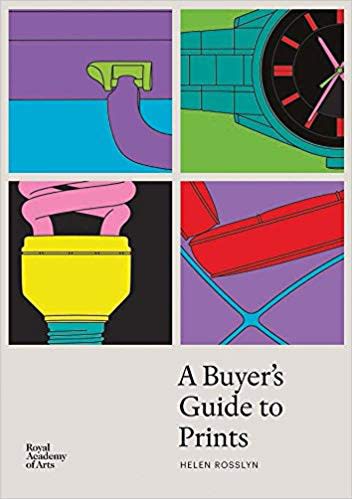Online only
Explore prints from our Exhibitors
Kunichika Toyoharu
Kabuki ‘Sukeroku’ o geiko ga sapōto: Geisha support for the kabuki play ‘Sukeroku’, 1872
Woodblock (nishiki-e)
40 x 27 cm
15 3/4 x 10 5/8 in
(each)
15 3/4 x 10 5/8 in
(each)
Sanders of Oxford
Online only
Online only
£ 1,950.00
Artist signature: Kunichika Toyohara Publisher: Yorozuya Magohei An impressive five panel scene from the play ‘Sukeroku’ by Kunichika Toyoharu. The scene shows Sukeroku and his brother Soga Jyūrō at the...
Artist signature: Kunichika Toyohara
Publisher: Yorozuya Magohei
An impressive five panel scene from the play ‘Sukeroku’ by Kunichika Toyoharu. The scene shows Sukeroku and his brother Soga Jyūrō at the centre of the scene, Agemaki, the courtesan, is seen to the right of them. In the surrounding four panels are ten Geisha. The names of the characters and the three main character actors who played them during the time are listed above the images.
‘Sukeroku’ is a Kabuki play, and one of the ‘Eighteen Great Plays’ or ‘Kabuki Jūhachiban’. The play, known in English as ‘The Flower of Edo’ tells the story of Sukeroku, the samurai Soga Gorō, and his quest for revenge for his murdered father. Sukeroku is visiting Agemaki, his favourite courtesan, at the pleasure district in modern day Tokyo when an older samurai Ikyū tries to persuade Agemaki away from Sukeroku. Sukeroku attempts to provoke Ikyū in to drawing his sword but fails. Sukeroku has a reputation for trying to start fights and begins to pick a fight with a saké-seller named Shimbei who eventually reveals himself to be Sukeroku’s older brother Soga Jyūrō in disguise. Sukeroku explains to his brother that he starts fights with people in an attempt to provoke them to draw their swords, Sukeroku can then see if their sword is their father’s and thus the person responsible for his death. It is later revealed that the older samurai Ikyū has their father’s sword and the enemy of their father.
Kunichika Toyohara (1835–1900) born Arakawa Yasohachi, was talented as a child and at about thirteen he became a student of Tokyo's then-leading print maker, Utagawa Kunisada. His deep appreciation and knowledge of kabuki drama led to his production primarily of ukiyo-e actor-prints, woodblock prints of kabuki actors and scenes from popular plays of the time. An alcoholic and womanizer, Kunichika also portrayed beautiful women (bijin-ga), contemporary social life, and a few landscapes and historical scenes. He worked successfully in the Edo period, and carried those traditions into the Meiji period. To his contemporaries and now to some modern art historians, this has been seen as a significant achievement during a transitional period of great social and political change in Japan's history.
Condition: Some fading to sheets. Light creasing to sheets.
Publisher: Yorozuya Magohei
An impressive five panel scene from the play ‘Sukeroku’ by Kunichika Toyoharu. The scene shows Sukeroku and his brother Soga Jyūrō at the centre of the scene, Agemaki, the courtesan, is seen to the right of them. In the surrounding four panels are ten Geisha. The names of the characters and the three main character actors who played them during the time are listed above the images.
‘Sukeroku’ is a Kabuki play, and one of the ‘Eighteen Great Plays’ or ‘Kabuki Jūhachiban’. The play, known in English as ‘The Flower of Edo’ tells the story of Sukeroku, the samurai Soga Gorō, and his quest for revenge for his murdered father. Sukeroku is visiting Agemaki, his favourite courtesan, at the pleasure district in modern day Tokyo when an older samurai Ikyū tries to persuade Agemaki away from Sukeroku. Sukeroku attempts to provoke Ikyū in to drawing his sword but fails. Sukeroku has a reputation for trying to start fights and begins to pick a fight with a saké-seller named Shimbei who eventually reveals himself to be Sukeroku’s older brother Soga Jyūrō in disguise. Sukeroku explains to his brother that he starts fights with people in an attempt to provoke them to draw their swords, Sukeroku can then see if their sword is their father’s and thus the person responsible for his death. It is later revealed that the older samurai Ikyū has their father’s sword and the enemy of their father.
Kunichika Toyohara (1835–1900) born Arakawa Yasohachi, was talented as a child and at about thirteen he became a student of Tokyo's then-leading print maker, Utagawa Kunisada. His deep appreciation and knowledge of kabuki drama led to his production primarily of ukiyo-e actor-prints, woodblock prints of kabuki actors and scenes from popular plays of the time. An alcoholic and womanizer, Kunichika also portrayed beautiful women (bijin-ga), contemporary social life, and a few landscapes and historical scenes. He worked successfully in the Edo period, and carried those traditions into the Meiji period. To his contemporaries and now to some modern art historians, this has been seen as a significant achievement during a transitional period of great social and political change in Japan's history.
Condition: Some fading to sheets. Light creasing to sheets.
Join Our Mailing List
* denotes required fields
We will process the personal data you have supplied in accordance with our privacy policy (available on request). You can unsubscribe or change your preferences at any time by clicking the link in our emails.





 A Buyer's Guide to Prints
A Buyer's Guide to Prints